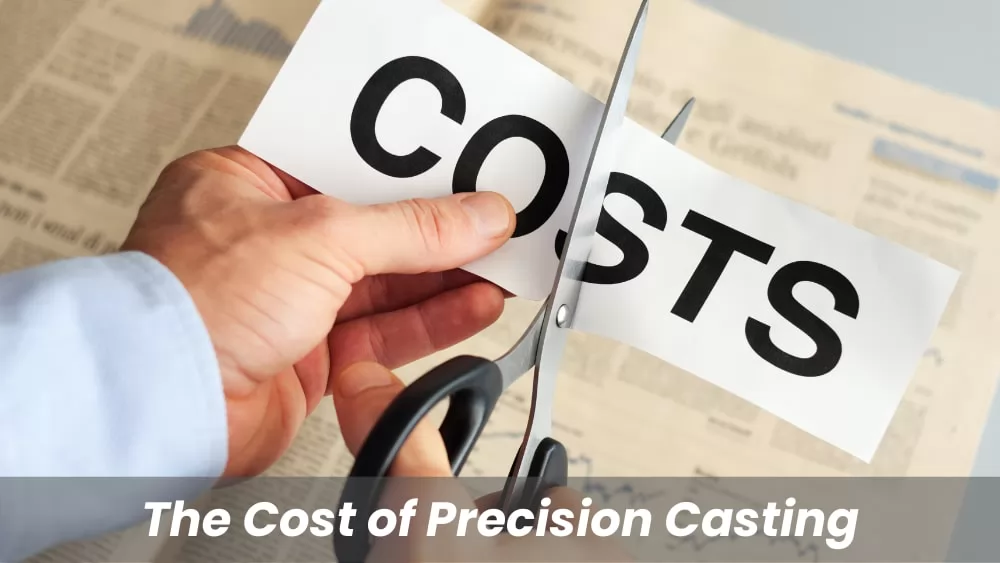
The biggest advantage of buying precision castings from China is the cheap price. More and more overseas customers choose to purchase precision castings in China, which can reduce their investment costs and gain more profits. Next, we will tell you how the cost of Chinese precision casting is estimated.
Material Costs
The cost of precision castings will vary depending on the metal material used. The more expensive the material, the higher the cost of the casting. Most foundry projects use a mix of recycled scrap metal and alloyed metals. Although there are more than 3500 different grades of steel, commodity steels are divided into four categories based on their content and end-use. Pricing will vary based on the region you buy from (EU, Asia, or North America), supply and demand, industry trends, and time of year.
Carbon Steel
Carbon Steel usually costs significantly less than stainless steel.
Alloy Steel
(aka steel with aluminum, chromium, copper, manganese, nickel, silicon, titanium, tungsten, or vanadium). Alloy Steel costs will vary depending on the metal type and are subject to supply and demand as alloy steels play a large role in the building and construction industry.
Stainless Steel
While the initial price of stainless steel casting is higher than other alloys, the longevity of the material can deliver economic costs over time.
Tool Steel
Carbon steel is the most common type of tool steel, alloy steel comes in second. Pricing for your tool steel will depend on grade and size requirements, including water-hardening tool steels, oil-hardening tool steels, air-hardening tool steels, high speed, hot working, or shock resisting tool steels. If you’re considering a tool steel casting project, identify special circumstances and considerations so that your foundry can help you select the right steel to achieve your exact specifications.
Mold Cost
Part Size
The size of the part controls tooling costs. Larger parts need large tools to handle them. This factor leads to a manufacturer needing more materials to make the tooling. A larger part size also directly influences the amount of time it will take to machine mold the cavity in the tooling.
Part Volume
The volume of the part impacts tooling costs. Higher volume parts need multi-cavity tooling to improve throughput. Multi-cavity tooling requires complex tooling design and more materials to make. The number of cavities in the tooling also directly influences the amount of time it will take to machine the tooling and to validate the tooling once it is completed.
Wax Cores
Parts that have intricate internal pieces may need cores made that will go into the wax patterns for the molds’ creation. These cores require separate tooling. Tooling costs may rise depending on the intricacy of the core’s design.
Casting Complexity
Casting complexity involves how simple or complex the part is. Parts with complex geometries require tools that have many moving parts. As more mechanisms are added to the tools, the price of the tooling also increases.
Tool Wear
In some instances for long production runs of high volume parts, tooling begins to wear out during the wax pattern manufacturing process. Tooling costs are factored in based on the type of material used to make the tool and the part’s material that becomes machined and cut. This circumstance typically occurs when cutting extremely hard materials. Most of the wearing for tooling occurs when moving parts encounter each other as they cause friction and abrasion. When tooling needs repairs, it is done quickly without significantly impacting production times.
Labor Cost
Labor costs make up a significant portion of the total cost for any investment casting project. When estimating costs, the average wage of a foundry worker plays a significant factor in investment casting cost estimates. When you calculate the time required for the mold-making process — the labor needed for the pouring of the metal, and the hours required to then remove the part from the mold and clean it, labor costs cannot be cut.
Processing Cost
Surface requirements affect precision casting applications such as wet painting, powder coating, galvanizing, anodizing, etc. These all affect the cost of the finished precision cast part.
Conclusion
To sum up, the cost of precision casting parts = material cost + processing cost + labor cost + mold cost. Of course, the final cost depends on the price you negotiate with the supplier. Choose a reliable investment casting supplier who can provide quality products at reasonable prices.
If you need precision castings, then you can choose to contact us. We can provide you with the best precision casting service.



